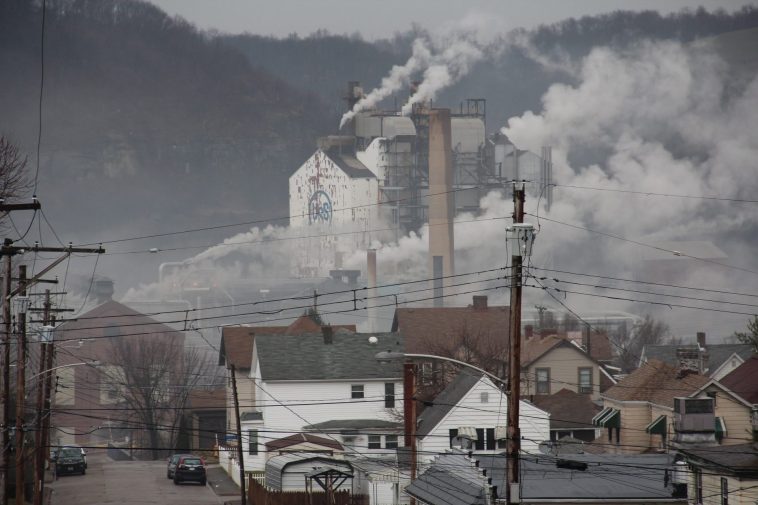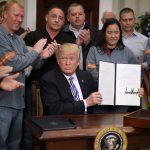

Reviewing the Call for Stricter Pollution Controls at Steel Plants
Recent events at U.S. Steel’s Clairton Coke Works have once again thrust the issue of industrial pollution into the spotlight. A tragic explosion that claimed the lives of two workers and injured many others has raised serious questions about the current safety protocols and environmental monitoring practices in the steel industry. Critics argue that delaying additional pollution monitoring measures, particularly fenceline oversight, is not only a policy misstep but a direct threat to community health and worker safety.
The explosion unfolded amid growing concerns that potentially toxic levels of chemicals, such as benzene and chromium, have been steadily polluting the air around steel mills. As authorities rush to piece together what exactly happened that fateful day, environmental advocates are urging stricter controls and more consistent oversight. They emphasize that effective monitoring is essential—not just for preventing future accidents but also for protecting the health of local residents and employees.
Examining the Need for Additional Fenceline Monitoring
Fenceline monitoring is a critical step in detecting and mitigating pollution from large industrial facilities. Fundamentally, it involves regularly measuring chemical levels around the perimeter of a plant, ensuring that any dangerous emissions are quickly identified and corrected. Environmental groups paint a compelling picture of what’s at stake if these measures are not promptly put in place.
The Environmental Integrity Project, an organization based in Washington, D.C., has produced detailed reports highlighting the risky levels of pollutants at steelmaking facilities not only in Pennsylvania, but also in states such as Indiana, Alabama, Illinois, Ohio, and Michigan. The group insists that regular monitoring along a plant’s boundary is key to catching harmful levels of chemicals early before they can cause serious health issues in the surrounding community.
- Regular monitoring of benzene and chromium levels
- Immediate identification and rectification of emission spikes
- Strengthened accountability across the steel industry
- Improved safety protocols for both workers and local residents
Critics argue that without these extra checks, the potential remains for dangerous pollutants to linger unchecked, making it essential that polluting companies take responsibility for reducing their environmental impact. The process might feel intimidating to implement given the tangled issues of industrial regulation, yet it stands as a super important measure for ensuring safe working conditions.
Lessons from Past Regulatory Successes: The Case for Benzene Monitoring in Refineries
The Environmental Protection Agency’s (EPA) success in mandating benzene monitoring at refineries offers a blueprint for how things could be handled across other industries. Tracking benzene levels at refineries has shown concrete results—a reduction by nearly 50% in facilities exceeding federal thresholds. This learning can serve as a strong incentive to implement similar policies in the steel industry.
Benzene, a known carcinogen that contributes to blood disorders and immune system harm, must be regulated diligently. The method of fenceline monitoring, first successfully applied to refineries, allows for real-time tracking and rapid response. In this light, steel plants, traditionally seen as indispensable to our industrial backbone, are now facing calls for equally rigorous measures to guard against uncontrolled emissions.
Adopting similar monitoring measures for steelmaking facilities can be seen as a natural and necessary step forward. The process involves carefully placing sensors and using routine air quality samplings around plant perimeters to keep track of hazardous chemicals. Each data point serves as a fine detail in the larger picture of environmental oversight.
Impact on Public Health and Local Communities
The release of dangerous chemicals such as benzene and chromium poses not just an environmental problem but a significant threat to public health. Residents living near industrial sites often find themselves at a crossroads—caught between the economic benefits provided by local industries and the risk of harmful pollutants affecting their day-to-day life.
Studies have linked benzene exposure to conditions ranging from immune system deficiencies to certain forms of leukemia, while chromium can cause lung damage and other respiratory issues. These are not abstract numbers or far-off concerns; they are problems that directly impact everyday lives, often in communities already experiencing a high level of industrial air pollution.
For example, local voices from the Clairton community describe living near these plants as a constant struggle with anxiety and health worries. Residents regularly express concerns about asthma flare-ups, long-term cancer risks, and the overwhelming burden of dealing with a polluted atmosphere—all of which paint a vivid picture of why more proactive safety measures are needed.
Exploring the Tricky Parts of Environmental Policy in Heavy Industry
Environmental policy in heavy industries such as steelmaking is often full of problems that are as dangerous as they are complicated. Many argue that timely and effective pollution monitoring would help untangle the many confusing bits of industrial regulation. However, what might seem like a straightforward process is loaded with bureaucratic delays and political twists and turns.
Critics have charged that current administrative practices under the Trump administration have been off-putting, with delays that put public safety at risk. In essence, waiting for more comprehensive monitoring measures to come into effect only means that dangerous pollutants continue to be released unchecked. These delays also contribute to an environment where necessary corrective actions are postponed until the consequences become too severe to ignore.
To better understand the sensitivity of the situation, it is helpful to consider a table outlining the key pollutants, their health effects, and the magnitude by which measured levels have exceeded recommended safe thresholds.
| Chemical | Health Effects | Safe Threshold | Reported Excess |
|---|---|---|---|
| Benzene | Cancer, blood disorders | Low ppm levels | Up to 8x higher |
| Chromium | Respiratory issues, reproductive harm | Minimal exposure | Exceeds limits in several areas |
These data points showcase not just the scale of the problem, but also how critical it is to get the little details right in monitoring environmental safety. It is not merely about ticking boxes on compliance forms, but about managing your way through a dangerous landscape where every reading on a monitor can mean the difference between health and illness.
Responsibility and Accountability in the Steel Industry
Amidst all the concerns, there lies an equally pressing issue of accountability. Industries producing essential products have a corresponding responsibility to ensure that their operations do not come at the expense of human life or environmental well-being. For steel plants, embracing proactive monitoring measures isn’t optional—it’s a responsibility that cannot be overlooked.
U.S. Steel’s Clairton site, for example, has accumulated over $10.6 million in fines over the past five years because of environmental violations. These penalties are reminders that proper safety protocols and pollution control measures are more than just regulatory checkboxes; they are a commitment to community safety and sustainable industrial practice.
Many argue that the steel industry must adopt a proactive stance, prioritizing transparency and continuous safety improvements. This means not only installing effective monitoring systems but also actively engaging with local residents and public officials to create a shared plan for safety and pollution reduction.
Community Voices: What Residents Have to Say
The concerns of local residents provide a human face to the environmental statistics. In communities like Clairton, where steel plants have long been a backdrop to everyday life, residents paint a picture of reality that is as alarming as it is candid. Many recall the day of the explosion with a mix of shock and dread—memories of a day when the familiar hum of industrial activity transformed into chaos.
For instance, one longtime resident described being home alone with her cat during the incident, running from room to room in search of the source of the terrifying noise. It wasn’t until she saw others posting on social media that she connected the event with the nearby coke plant. “It was a scary day,” she said, underscoring the urgency for stricter fenceline monitoring.
Community feedback consistently rings in a similar tone, with residents emphasizing that their lives should not be put at risk for the sake of economic growth. They stress that robust pollution monitoring is not just a regulatory necessity—it’s a critical part of ensuring that everyone, from industrial workers to local families, can breathe clean air and live without constant worry about the hidden dangers lurking around them.
Lawsuits and Administrative Delays: Charting the Path Forward
Amid pronounced frustrations, the Environmental Integrity Project has taken legal action to ensure that the necessary monitoring measures are eventually put in place. A lawsuit that challenges the delays imposed by the current administration is a clear signal that many believe the consequences of inaction are too great to ignore.
The logic behind the legal action is simple: if such requirements have been proven successful in one sector—like the monitoring of benzene in refineries—they should be extended to industries that pose similar risks. The lawsuit argues that the delay in implementing additional fenceline monitoring is effectively sacrificing community health for administrative convenience.
Legal experts point out that the current setbacks not only hinder short-term public safety but also risk entrenching a culture of leniency within heavy industrial sectors. By rolling back protections that have already proven effective, regulators are, intentionally or unintentionally, allowing companies to skirt around more rigorous standards.
As the lawsuit moves through the judicial system, it has already sparked a broader conversation about accountability and the roles that both industry leaders and government regulators must play in ensuring that public health is never compromised for the sake of bureaucratic indecision.
A Close Look at the Recent Explosion and Its Aftermath at Clairton Coke Works
The recent explosion at Clairton Coke Works has been a turning point in the ongoing conversation about industrial safety. Early reports suggest that the blast was triggered by an ignition of coke gas due to a leaking valve during routine maintenance. While investigations continue to determine the full scope of the incident, the explosion has already led to a closer examination of the safety protocols at the plant.
In response to the incident, local authorities deployed additional mobile units to closely track air quality in the immediate vicinity. Although initial findings indicate that pollutant levels have remained within permissible limits post-incident, the explosion itself has understandably heightened fears about potential long-term effects on both the workers and nearby residents.
Many community members express a sense of urgency; even if the immediate pollutant readings are acceptable, the hidden complexities of industrial emissions remain a point of concern. For many, the explosion is a stark reminder that without continuous, real-time monitoring of pollutant levels, hazardous conditions could be allowed to fester undetected.
Officials have pledged to conduct a thorough investigation into the explosion, but for many residents, the event underscores a larger systemic issue: the need for more immediate and effective oversight mechanisms. The incident has catalyzed a renewed call for policies that are designed to catch dangerous emissions before they lead to irreversible damage.
Charting the Future of Pollution Monitoring at Industrial Facilities
Looking ahead, there is a tangible hope that comprehensive fenceline monitoring will become a standard in the steel industry. Such measures are not only seen as a reactive tool to address issues as they arise, but also as a proactive strategy to avoid catastrophic events in the future.
Stakeholders are now discussing how federal authorities could implement a system similar to the EPA’s benzene monitoring program for refineries. This would involve installing monitoring stations at key points along a facility’s perimeter, where data on chemical pollutants is gathered in real time. The objective is to figure a path that minimizes risk, ensuring that every rise in pollutant levels triggers an immediate investigation and corrective action.
Advocates argue that working through these complicated pieces of industrial oversight is absolutely essential for protecting communities. While the process may involve a number of intimidating and nerve-racking steps, the benefits—both in terms of public health and environmental preservation—are key to creating safer industrial environments.
For policymakers, this means not only drafting stringent rules but also ensuring that these rules are enforced delinearly, with severe penalties for non-compliance. It also means providing clear guidance on the acceptable levels of various pollutants, and establishing procedures that ensure rapid response when those levels are exceeded.
- Implement real-time fenceline sensors
- Set clear, enforceable pollutant level thresholds
- Institute rapid-response protocols for when limits are breached
- Ensure transparent reporting and community engagement
Although transitioning to such a robust monitoring system may be a daunting task for the industry, the alternative—a landscape where toxic exposures become normalized—is simply not acceptable. Through collaboration between regulatory bodies, industry leaders, and local communities, steering through these troubled waters is possible.
Conclusions: Steering Through Complicated Pieces of Environmental Policy
The recent events at Clairton Coke Works have offered a sobering look at the challenges facing the steel industry today. They reveal not only the dangerous environmental impacts of industrial pollution, but also highlight the tangled issues of accountability and delayed regulatory response. In times when every decision carries critical implications for public safety, the need for concrete, immediate action cannot be overstated.
For many in the industry and among environmental advocates alike, it is clear that ensuring proper fenceline monitoring is not just a bureaucratic priority, but a must-have measure to safeguard health and security. The explosion at Clairton stands as a rallying cry—a reminder that every delay, every administrative setback, could cost lives. The inclusion of regular, comprehensive pollutant monitoring systems would not simply pin a label of “compliance” on a facility. It would represent a commitment to the well-being of every community member who lives and works near these industrial giants.
It is time for industry leaders and government officials to put aside politically charged delays and focus on the essential task at hand: protecting our air, our workers, and our communities. Steel plants, with all their economic importance, must evolve to embrace modern safety protocols that account for the hidden complexities of industrial processes. Only then can we truly call ourselves a responsible society.
As we move forward, the hope is that legal challenges and community outcry will push regulators to adopt more proactive, continuous monitoring practices that have already proven successful elsewhere. If history is any guide, the fine points of effective monitoring, when applied rigorously and without compromise, can significantly reduce hazardous exposures. In this sense, the experience at Clairton may serve as a turning point—a moment when the industry and regulators alike decide to make public health an unequivocal priority.
Ultimately, the pathway to safer industrial operations lies in the willingness to figure a path through the tricky parts of environmental regulation. By embracing transparency, accountability, and modern monitoring technologies, we can ensure that the lessons learned from past incidents guide us to a future where communities no longer have to pay the hidden price of industrial progress.
The time to act is now. The safety of workers and the wellbeing of our communities—and indeed, the health of future generations—depend on it. Let this be a call to action for everyone involved, from policymakers and industry executives to local residents who deserve to breathe clean, safe air every single day.
Originally Post From https://community.triblive.com/news/3861889
Read more about this topic at
Group accuses Trump of delaying tighter pollution …
TribLive’s post


